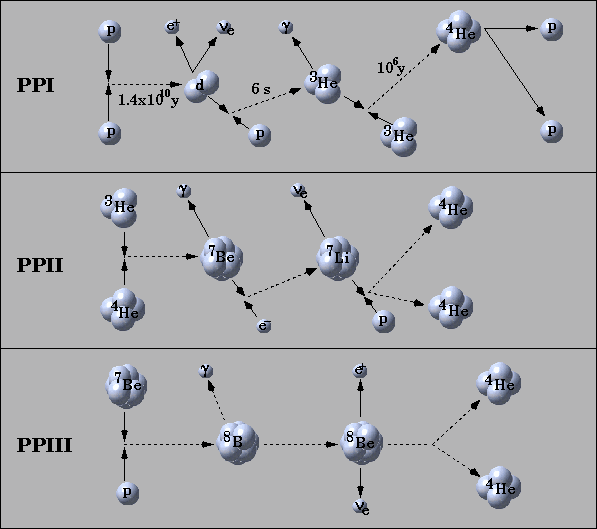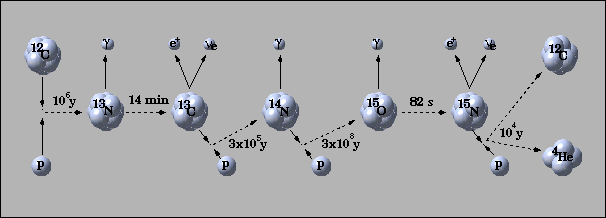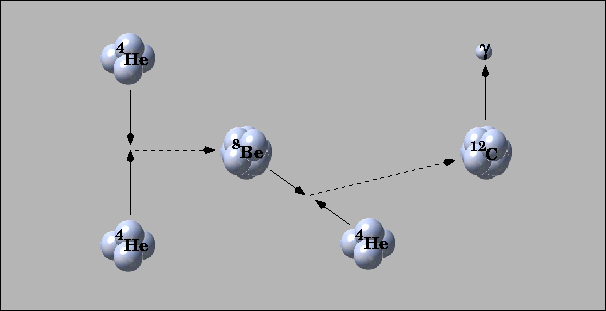| hydrogen and helium burning |
|
| PPI chain | PPII chain | PPIII chain |
| this starts with reactions 1 and 2 | this starts with reactions 1, 2 and 3' | |
|
1
p + p -->
d + e+ + |
3'
3He + 4He -->
7Be + |
4''
7Be + p -->
8B + |
|
2
d + p -->
3He + |
4'
7Be + e- -->
7Li + |
5''
8B -->
8Be + e+ +
|
| 3 3He + 3He --> 4He + p + p | 5' 7Li + p --> 4He + 4He | 6'' 8Be --> 4He + 4He |
| Figure 17: |
The proton-proton chain.
|

|
1 12C + p
--> 13N + |
|
2 13N
--> 13C + e+ +
|
|
3 13C + p
--> 14N + |
|
4 14N + p
--> 15O + |
|
5 15O
--> 15N + e+ +
|
| 6 15N + p --> 12C + 4He |
| Figure 18: |
The CNO cycle.
|

| 4He + 4He --> 8Be |
|
8Be +
4He -->
12C + |
| Figure 19: |
The triple alpha reaction.
|
